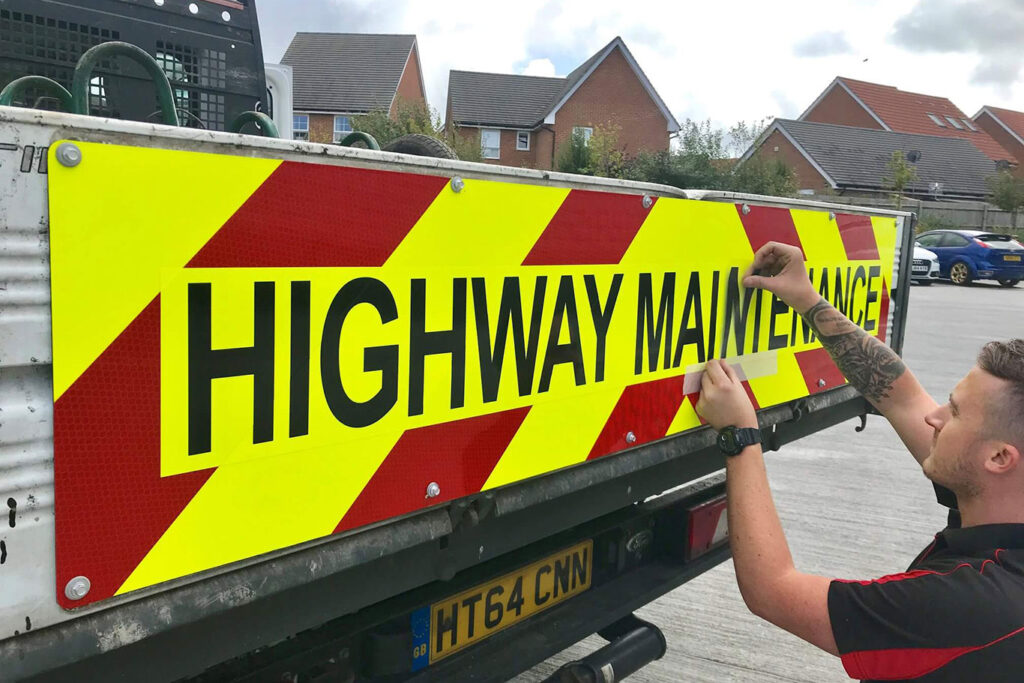No products in the basket.
No products in the basket.

Fleet operators and highway maintenance providers across the UK face strict visibility and safety requirements. At the heart of these lies Chapter 8 chevron regulations, which set out guidance for applying reflective markings to vehicles operating on public roads. Designed to improve visibility, reduce accidents, and keep workers safe, these regulations are essential for any business that uses vehicles for traffic management or roadside work.
Chapter 8 chevron regulations form part of the Department for Transport’s Traffic Signs Manual. While not legislation themselves, they are widely regarded as best practice and referenced in legal cases. They require:
By following these guidelines, organisations ensure their fleets are both professional and legally protected.
Being compliant with chapter 8 chevron regulations goes beyond ticking a box. The benefits include:
For companies managing lorries, vans, and service vehicles, rear chevron application is a vital element of road safety compliance in the UK.
Use reflective chevron kits designed for your vehicle type. Pre-cut kits save time and ensure full compliance with Chapter 8 standards.
The vehicle rear must be clean, dry, and free of grease before application to ensure durability.
Position the vehicle chevrons so the stripes angle upward at 45 degrees. Alternate between red and fluorescent yellow panels, covering the full width.
Step back and confirm the application meets traffic management regulations and visibility requirements.
Avoiding these pitfalls ensures compliance and long-term safety benefits.
For fleets, correct application can vary. Highway maintenance vehicles require full rear coverage, while smaller vans may use partial chevron kits to remain compliant. Emergency vehicles often use additional reflective graphics to maximise visibility in high-risk conditions. Regular maintenance is also important—chevrons should be inspected for fading, peeling, or dirt build-up that may reduce reflectivity. Replacing worn panels promptly ensures that vehicles remain fully compliant and visible. By combining quality materials with proper upkeep, businesses can extend the life of their reflective chevrons and maintain a professional appearance on the road.
Chapter 8 chevron regulations are a cornerstone of UK fleet compliance and road safety. By applying reflective markings correctly, businesses protect workers, reduce accidents, and ensure legal security. Whether managing a single vehicle or a large fleet, following Chapter 8 guidance is essential for compliance and safety.
For high-quality chevron kits and professional guidance, visit our shop at All About Chevrons.
📞 Phone: 023 9252 0333
📧 Email: info@allaboutchevrons.com
Q1: Are Chapter 8 chevrons a legal requirement?
A1: While not law, they are considered best practice and are often referenced in court cases, making compliance strongly recommended.
Q2: What vehicles require chevron markings?
A2: Highway maintenance vehicles, fleet vans, and any vehicle working on high-speed UK roads should display Chapter 8 compliant markings.
Q3: Can chevrons be self-applied?
A3: Yes, pre-cut kits make application straightforward, but professional fitting ensures accuracy and compliance.